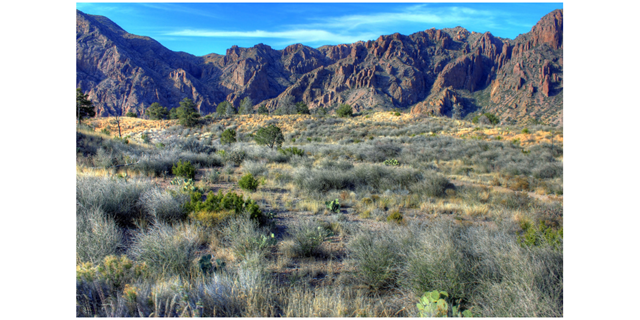Every year, Texas Parks and Wildlife sells millions of hunting and fishing licenses to people who will spend many hours in the outdoors, interacting with friends, family, and wildlife. However, hunting and fishing is just one of many ways the average person can enjoy the outdoors and interact with wildlife. Barrett Koennecke, Natural Resource Specialist for Texas Parks and Wildlife, has some tips for how you can best find and observe animals, both in the wild, and in your own backyard.
In Your Backyard
Barrett:
If you’re, looking for something close by in your backyard, the easiest thing is to put out a bird feeder. A lot of birds are very specific with what they want to eat. A cardinal or dove will prefer bigger seeds, while smaller birds like finches prefer something more like a thistle seed. The same with fruit, some birds are more attracted to fruit, such as Orioles or Mockingbirds. Put out some orange slices or cubed melon in a dish to attract them. You can also put out a bird bath or water feature preferably with trickling water. The sound of water naturally attracts native wildlife.
Another thing you can do is to plant flowering shrubs like a Salvia, Butterfly Bush, or Lantanas. Those will attract your pollinators such as hummingbirds, bumblebees, and monarch butterflies. It has become quite popular for people to set up a Pollinator Garden, where you have 7 or 8 species of blooming plants that bloom at different times of the year. That way, they’ll bring a diverse range of pollinators year-round.
If you’re looking to attract larger wildlife, you can put a little deer feeder on your property. I wouldn’t recommend putting it right in your backyard. Deer can be dangerous, especially during the rut when bucks are getting territorial. However, if you have the space to put out a feeder 50 yards or further from your porch, you can sit with some binoculars and observe them as they come by. By putting out a range of grains like corn, milo or similar, you’ll also attract some smaller birds like dove or quail.
It’s important to note with this, however, that a lot of areas don’t allow you to feed deer. They can become a problem, especially in subdivisions where you have a dense population of people and deer coexisting. Some areas prefer the deer move on and not linger, as they can cause car accidents. So make sure you know it’s legal for you to feed them before putting out any feed.
As a Natural Resource Specialist, a big part of my job is going out to the homes of landowners and sharing my technical expertise with them. If anyone wants a representative to come out and evaluate their habitat, giving advice on how best to utilize your space for wildlife, contact your local Texas Parks & Wildlife office.
In the Wild
Barrett:
If you would like to go out and mingle with wildlife in their habitat, Texas offers a wide range of public parks and wildlife management areas with hiking and biking trails. Texas is a diverse state when it comes to habitats in the wild, and if you compare East Texas through to West Texas, there’s a wide range of critters throughout the state. Each park and wildlife area offers a different range of wildlife. For instance, the South Texas Rio Grande Valley area has become very popular with birders. Folks come from all over the world to catch a glimpse of a Green Jay or Chachalaca at bird watching towers. Many parks have bird blinds setup with feeders and running water where you can sit and take pictures of the birds and wildlife that come by.
Another thing that a lot of people don’t know about, is that many state parks have paddling trails. Little courses up and down rivers or through shallow parts of lakes where you can take a kayak, paddle board, or inner tube and float along observing the shore birds, waterfowl, and fish. Several parks will rent you a kayak or inner tube, just call ahead to make sure they have enough available at the time you want to go.
If you want to optimize your experience in the wild, time of day can help you depending on what you’re looking for. As a general rule, early in the morning and late in the evening are the best times to see wildlife. Especially in the summer, when the middle of the day is very hot, they will do most of their moving around during dawn and dusk.
Also, time of the year can be important, especially when you’re looking to see some migratory birds. We get a huge migration of raptors moving down south this time of year, October to November, heading to South Texas, Mexico and South America. Then they head back during March and April. So, if you’re a birder interested in raptors, that’s the time of the year you’d see them moving through the area.
A lot of people may live in an area that’s too far for a public park or wildlife area to be convenient to get to, or you live in town and can’t attract wildlife to your backyard. Don’t worry, you can still get out and enjoy wildlife. If you have time early in the morning, there’s nothing wrong with getting up at sunrise and driving some of the public county roads in rural areas. There’s an amazing amount of deer, turkey, box turtles, horned lizards…just a lot of animals and wildlife in those areas that you won’t see near busier, paved roads.
Hi-Pro Feeds wants to thank Barrett and everyone with the Texas Parks and Wildlife service for all their hard work keeping Texas a beautiful, vibrant, and diverse habitat. Get out there and explore the wild!
For more information on Texas Parks and Wildlife, visit their website.


